Achieving Net Zero Emissions by 2050: The Road Ahead
Posted on Thursday 17 July, 2025The global push to achieve net zero emissions by 2050 is one of the most ambitious undertakings in history. Governments, organizations, and industries across the world are joining forces to address climate change, aiming to eliminate or offset all carbon emissions by mid-century. While the challenges are immense, the opportunities to innovate and reshape the future are equally vast.
This blog will delve into what net zero emissions by 2050 entails, the intermediate targets leading up to this goal, the critical role of businesses in driving the transition, and how Sempergreen is contributing to this transformative journey and can help your business with innovative green solutions.
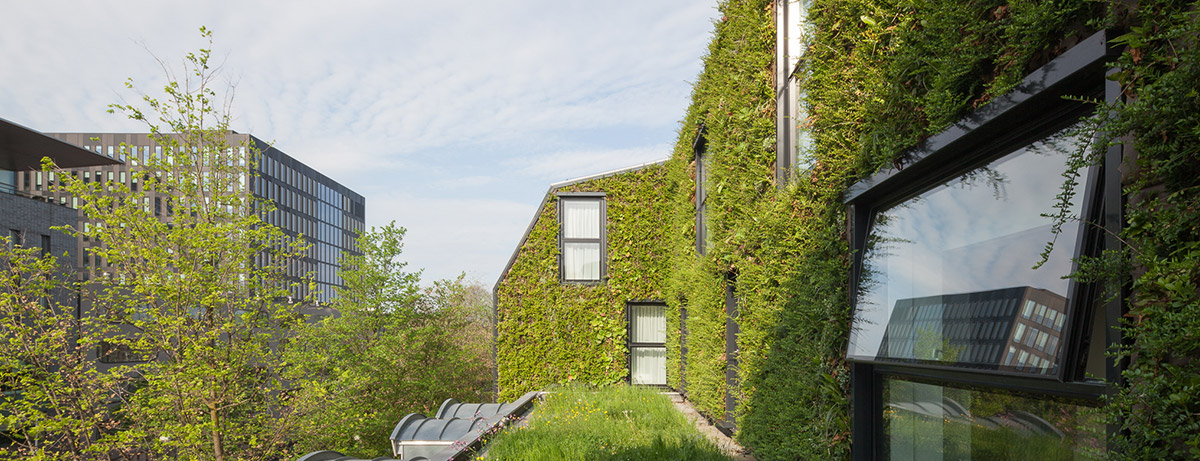
What does Net Zero Carbon emissions by 2050 mean?
Net zero emissions refer to a state in which the amount of greenhouse gases (GHGs) emitted into the atmosphere is balanced by the amount removed. Achieving this balance is essential to curbing global warming and meeting the targets of the Paris Agreement, which aims to limit temperature rises to 1.5°C above pre-industrial levels.
Achieving net zero involves two key strategies:
- Reducing Emissions: Transitioning to renewable energy, improving energy efficiency, and adopting sustainable practices across industries.
- Removing Emissions: Investing in carbon capture and storage technologies, afforestation, and natural solutions like wetlands restoration.
Why is 2050 a critical deadline?
The year 2050 represents a tipping point in climate action. According to the International Energy Agency (IEA) and the European Union's 2050 Long-Term Strategy, delaying significant emissions reductions will make the goal of limiting global warming exponentially harder—and more expensive—to achieve.
Here are some key milestones on the path to 2050:
- By 2025: Phase out unabated coal power globally and establish strong frameworks for renewable energy.
- By 2030: Achieve a 55% reduction in emissions in the EU (compared to 1990 levels) and ensure renewable energy constitutes 60% of global power generation.
- By 2040: Electrify transportation systems, transition industries like steel and cement to low-carbon processes, and implement large-scale carbon capture.
- By 2050: Achieve complete carbon neutrality across all sectors.
Global progress and regional commitments toward Net Zero
Countries and regions are making varying levels of progress toward these milestones. For instance, Germany has committed to reducing emissions by at least 65% by 2030, with a net zero target for 2045. Similarly, the Netherlands’ Climate Agreement aims for a 55% emissions reduction by 2030 and full carbon neutrality by 2050, while France continues to implement its Energy and Climate Plan to achieve neutrality by 2050. In Spain, renewable energy is a key focus, with ambitious goals to decarbonize electricity generation by 2030. The UK, as one of the first major economies to legislate a net zero target, is pushing ahead with plans to phase out fossil fuel reliance. Meanwhile, the USA, under its updated climate commitments, aims for a 50-52% emissions reduction by 2030, with significant investments in renewable energy and green infrastructure.
Achieving these targets, however, requires fair and effective global cooperation. The pathway to net zero emissions by 2050 is narrow, necessitating contributions from all countries. Advanced economies, such as those in Europe and North America, must lead the way by reaching net zero earlier than emerging markets and developing economies. Yet, even with these commitments, the Netherlands Environmental Assessment Agency (PBL) highlights that a global emissions gap remains, signaling the need for accelerated innovation, collaboration, and scalable solutions to meet the 2050 targets.
Achieving these targets, however, requires fair and effective global cooperation. The pathway to net zero emissions by 2050 is narrow, necessitating contributions from all countries.
The role of businesses in achieving Net Zero
While governments set targets and frameworks, businesses are the driving force behind achieving net zero. Their influence spans energy consumption, production processes, supply chains, and even consumer behavior. Transitioning to carbon-neutral operations is no longer optional but a fundamental requirement for long-term sustainability and competitiveness.
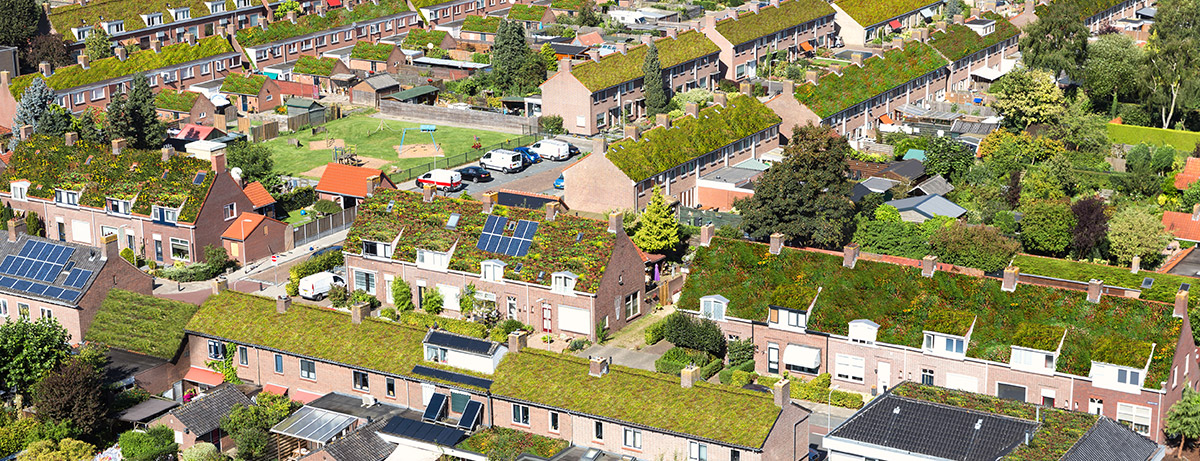
Key actions businesses must take
- Adopt Renewable Energy: Transitioning to solar, wind, and other renewable energy sources reduces dependency on fossil fuels.
- Optimize Resource Efficiency: Businesses can reduce waste and energy consumption through innovations in technology and operations.
- Decarbonize Supply Chains: Working with suppliers to implement sustainable practices can significantly reduce indirect emissions (Scope 3).
- Invest in Green Infrastructure: Incorporating green roofs, living walls, and other nature-based solutions can offset emissions while improving urban environments.
- Engage Stakeholders: Transparent reporting and collaboration with governments, consumers, and NGOs build trust and drive collective action.
Why carbon neutrality benefits businesses
- Cost Savings: Energy-efficient practices and renewable energy often result in lower operational costs over time.
- Regulatory Compliance: Meeting emissions standards helps businesses avoid penalties and align with future regulations.
- Brand Reputation: Consumers increasingly prefer eco-conscious brands, enhancing market competitiveness.
- Investor Appeal: Sustainable practices attract investors who prioritize environmental, social, and governance (ESG) factors.
Sempergreen’s commitment to the Net Zero Mission
While governments set targets and frameworks, businesses are the driving force behind achieving net zero. Their influence spans energy consumption, production processes, supply chains, and even consumer behavior. Transitioning to carbon-neutral operations is no longer optional but a fundamental requirement for long-term sustainability and competitiveness.
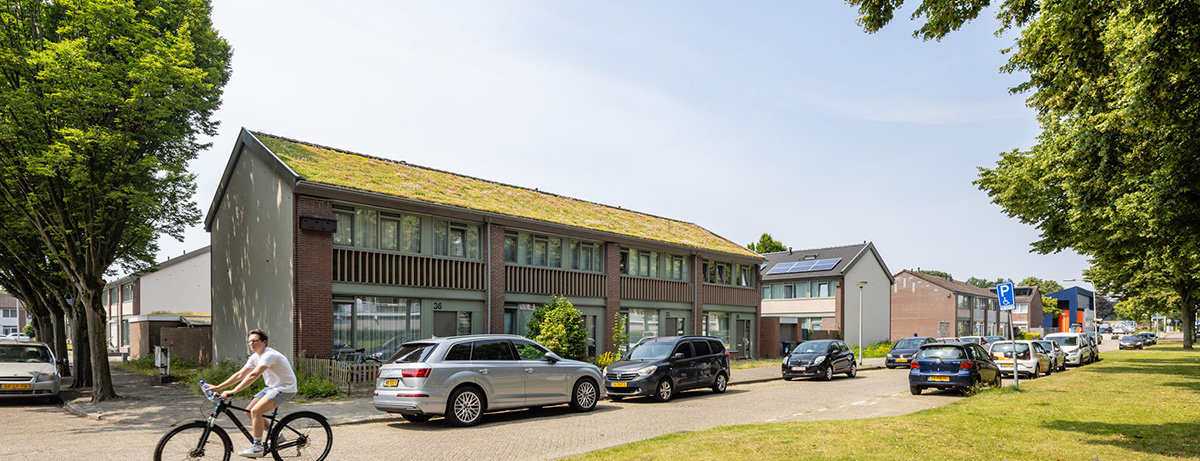
Why carbon neutrality benefits businesses
1. Green Roofs
- Reduce urban heat island effects, lowering energy demand for cooling.
- Absorb CO₂ and other pollutants, improving air quality.
- Retain rainwater, mitigating flood risks and reducing stormwater system pressure.
2. Living Walls
- Act as natural insulators, reducing energy consumption in buildings.
- Create habitats for biodiversity, addressing ecosystem loss in urban areas.
- Enhance aesthetic and psychological well-being in dense city environments.
3. Sustainable Ground Covers
- Prevent soil erosion, retain water, and promote sustainable land use.
- Serve as carbon sinks, capturing and storing atmospheric CO₂.
But we go beyond our products
We have set concrete sustainability goals to maximise our long-term impact
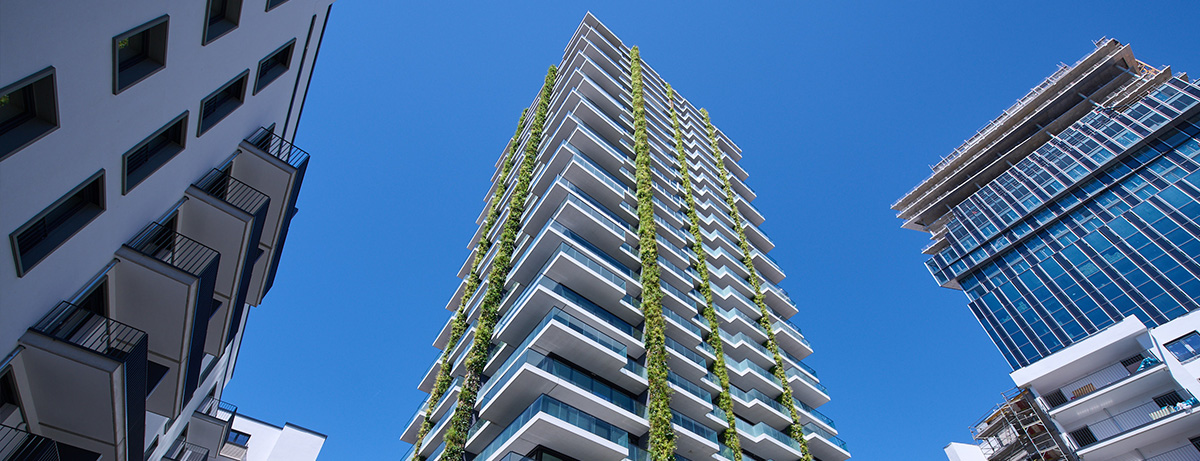
Why carbon neutrality benefits businesses
While governments set targets and frameworks, businesses are the driving force behind achieving net zero. Their influence spans energy consumption, production processes, supply chains, and even consumer behavior. Transitioning to carbon-neutral operations is no longer optional but a fundamental requirement for long-term sustainability and competitiveness.
- SDG 11 (Sustainable Cities and Communities): By greening building and infrastructure, we make cities more liveable and climate-resilient.
- SDG 12 (Responsible Consumption and Production): We strive for circular product development and more sustainable use of materials.
- SDG 13 (Climate Action): Our green solutions help to reduce CO₂ emissions and combat urban heat stress.
- SDG 15 (Life on Land): Our products support biodiversity and healthy ecosystems in urban environments.
Circularity: moving towards 100% circular products
One of the key pillars of our sustainability strategy is circularity. Our ambition is to introduce a fully circular product line by 2026, with at least 30% of our sales coming from circular products by 2030. This means we are continuously working on more sustainable materials, increasing product lifespan, and developing innovative solutions for reuse and recycling.
Partnership with Over Easy Solar
Beyond greening urban spaces, we also look at integrated sustainable solutions. Our partnership with Over Easy Solar allows us to combine green roofs with efficient solar energy solutions. This not only enhances urban biodiversity but also supports the energy transition by reducing the carbon footprint of buildings. The synergy between nature-based solutions and renewable energy is a crucial step towards achieving net zero.
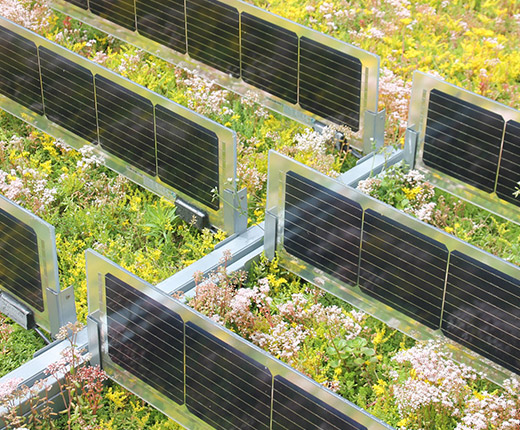

Sempergreen’s vision for 2050
Sempergreen understands that achieving net zero by 2050 is not just a destination. It is a journey that requires:
- Continuous Innovation: Investing in R&D to enhance the performance and accessibility of green solutions.
- Collaborative Partnerships: Working with municipalities, architects, and developers to integrate green infrastructure into urban planning.
- Global cooperations: Playing an active role in global cooperations as a member of organizations like the World Green Infrastructure Network (WGIN), the Green Infrastructure Alliance (GIA), and the German Association for Building Greening (BuGG). Through these memberships, Sempergreen contributes to shared expertise, fosters innovation, and helps shape global green building standards.
- Education and Awareness: Advocating for the adoption of sustainable practices and educating stakeholders about their impact.
Actionable steps by Sempergreen
- Green Cities Initiative: Collaborating with urban planners to incorporate green roofs and walls into cityscapes for climate resilience.
- Sustainable Operations: Reducing our own carbon footprint through energy-efficient production processes and renewable energy use.
- Global Impact Projects: Participating in large-scale projects that demonstrate the scalability and effectiveness of green infrastructure.
The bigger picture: scaling nature-based solutions
Nature-based solutions, like those provided by Sempergreen, are among the most scalable and impactful tools for achieving net zero. Here’s why:
- Adaptable Across Regions: From densely populated urban centers to rural areas, green solutions can be tailored to suit different climates and geographies.
- Cost-Effective: Green roofs and walls often require lower upfront investment than engineered alternatives while delivering long-term benefits.
- Multiple Co-Benefits: Beyond emissions reduction, these solutions enhance biodiversity, manage water resources, and improve public health.
By investing in such solutions, businesses and governments can create a ripple effect, inspiring more stakeholders to adopt sustainable practices.
Challenges on the Road to 2050
By investing in such solutions, businesses and governments can create a ripple effect, inspiring more stakeholders to adopt sustainable practices.
- Funding: Scaling sustainable infrastructure requires significant investment.
- Policy Barriers: Regulatory frameworks must evolve to prioritize and incentivize green solutions.
- Public Awareness: Stakeholders need to recognize the value of nature-based solutions in combating climate change.
Sempergreen actively addresses these challenges by providing cost-effective solutions, advocating for supportive policies, and educating communities about the impact of green infrastructure.
Conclusion: building a carbon-neutral future together
The 2050 net zero emissions target represents both a challenge and an opportunity to redefine how we live, work, and build our cities. By embracing innovative, nature-based solutions, we can create urban environments that are not only sustainable but also resilient and vibrant.
Sempergreen is committed to being a catalyst for this change, providing the tools and expertise needed to turn vision into reality. From energy efficiency to biodiversity restoration, Sempergreen’s green roofs, living walls, and sustainable ground covers pave the way toward a carbon-neutral future.
Ready to make an impact? Explore our reference projects to see how Sempergreen is already shaping the cities of tomorrow, or contact our experts today to discuss how we can help you achieve your sustainability goals.
Ready to make an impact?
Explore our reference projects to see how Sempergreen is already shaping the cities of tomorrow, or contact our experts today to discuss how we can help you achieve your sustainability goals.
Let’s make Replanting the Planet a part of your projects. Together, we can achieve net zero by 2050!
